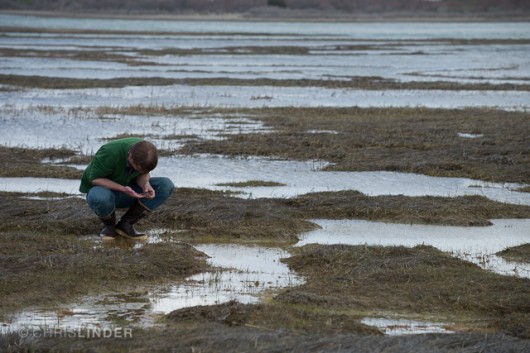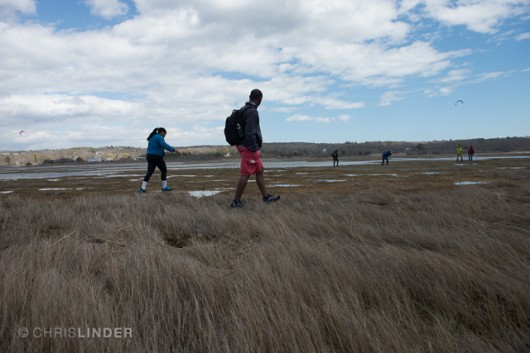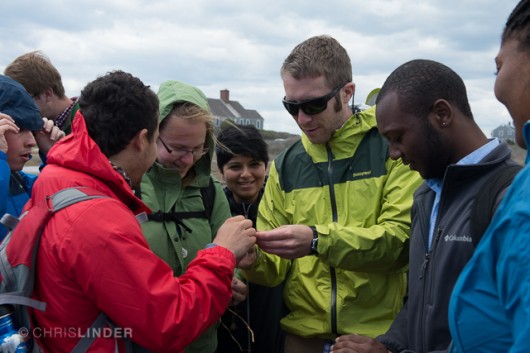As John Wood mentioned in his blog about the Polaris Project Retreat, we spent some time in the Great Sippewissett Marsh last weekend in preparation for our trip to the tundra in Eastern Siberia.
How does visiting a marsh in Cape Cod help us with our work on the Arctic tundra?
Marshes and tundra have a lot in common. They both play important roles in the global carbon cycle, and are complex ecosystems with many interacting species living in a range of physical and chemical conditions. Their complexity results in interesting patterns that we can ‘see’ (maybe with a little technological help); and with a bit of knowledge and a lot of creative thinking, we can imagine plausible explanations (otherwise known as hypotheses) for these patterns.

This is the heart of what science really is about. Science is not a bunch of facts. Science is a process we use to create knowledge, to help us understand the world around us. For many of us, this is an end in itself. We feel the joy of discovery in seeing something new or uncovering information that no one knew before.
One of our great hopes is for each student to experience this joy of discovery during our time together. The work we are doing now is to prepare as best we can to be successful. We believe that if we are ready, we will see something that will stimulate a new idea or way of looking at a problem or a new question that will light up a pathway to a deeper understanding of the tundra. That is the mission of the Core.
To be successful, we need to develop habits of mind that will enable us to look at a new landscape with a ‘scientific eye’ and to creatively interpret what we see. We do this by juxtaposing our observations with what we already know (from reading or personal experience) and what we can imagine. From that juxtaposition will emerge new hypotheses. Visiting the marsh gave us a chance to practice, to imagine why grass grew in some parts of the marsh but not in others, or why those small depressions filled with water formed where they were.

Scientific discovery rides on the shoulders of what has come before. It does not, however, come from unquestioning adherence to old ideas or prior explanations. The scientific process requires a healthy and reasoned skepticism, a mind open to the possibility that what we know today may change tomorrow. We must be confident in our ability to create new knowledge, to risk pursuing an idea that has captured our imagination, even if the outcome seems uncertain .
Reading a landscape takes practice. We have to think like children, drop our inhibitions and get our hands dirty, use all of our senses and fight the fear of being wrong or saying something dumb. An idea doesn’t have to be right to be a great idea. And being wrong is not a failure.

Visiting the marsh was just the latest in a series of activities designed to cultivate these habits of mind. We have asked the core students to spend time outside, to get to know a natural area near their home or school. We have read science papers together, and met virtually and in-person to share ideas and interests with each other. And now we have explored a marsh together.
Over the next few weeks the Core students will begin posting here to introduce themselves and to share their ideas and experiences with the world.
So stay tuned, the really good stuff is on the way.




Comment(1)-
nicole boxer says
July 14, 2014 at 2:38 pmExcellent work, Dr. Schade! Don’t know who else could have interested me in nutrient cycling, but you!